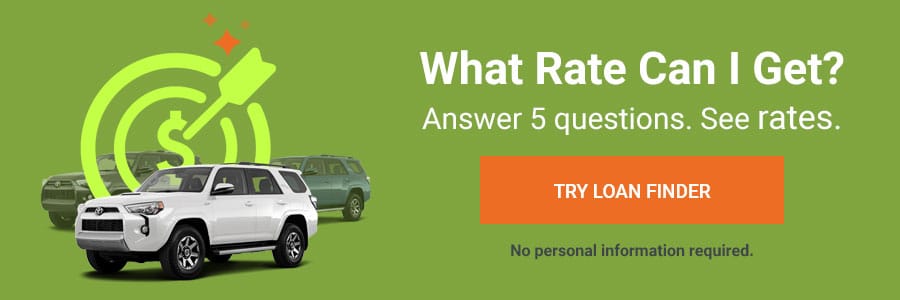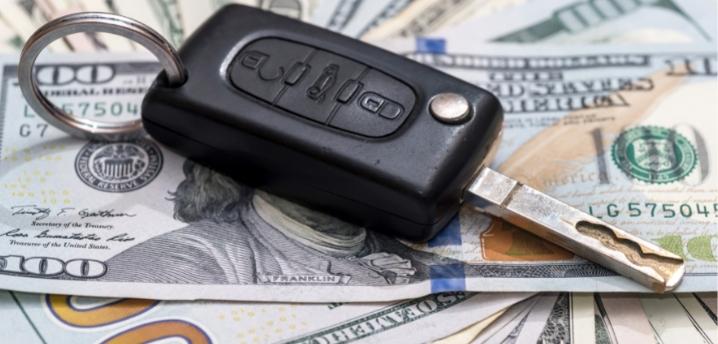Disappointed by your trade-in offer? Learn why it’s lower than market value and what you can do.
If you’re in the market for a new car, you’re probably doing a double-take at current sticker prices. We don’t blame you, considering they’re near all-time highs. New cars sold for $46,085 on average in February. Woof.
Used car prices are also quite high right now. The Manheim Used Vehicle Index, which evaluates used car pricing trends, also hit an all-time high in January. So, many drivers may look to offset gut-wrenching new car prices by trading in their current rides. (Especially while interest rates are low — the Fed plans to raise rates a handful of times this year.)
But if you’ve received a trade-in offer recently, you might be wondering: “Why is my trade-in value so low?”
Don’t worry, it’s a common question and predicament. That’s why we’ve outlined how the trade-in process works, particularly how dealerships determine your car’s value and how you can get the best price for your old car.
What Is Trade-in Value?
Generally speaking, most individuals only need one car. So, when the time comes to buy your next vehicle, it’s quite common to also trade in your existing car to lessen the financial hit of the purchase. Whatever the dealership is willing to pay you for your current car would be its trade-in value.
For example, let’s say you currently drive a Honda Accord, but you want to trade it in to buy a $30,000 Ford Bronco. Because you’re diligent, you check out Kelley Blue Book (KBB) to figure out the market value of your car, which we’ll pretend is $15,000. However, when you visit your local Ford dealership, they make you a trade-in offer of only $13,000. What gives?
Consider what a trade-in is — a seller-to-dealer-to-buyer deal. Car dealers aren’t buying used cars just to make their lots look fuller. For the transaction to make economical sense, dealerships will typically pay a lower price for a used vehicle than its actual market value. Then, they’ll recondition the car, fix it up (if necessary), and place it on their lot with a higher price tag.
The difference between trade-in value and retail value will vary. However, we can use AutoNation as a decently reliable benchmark. In 2021, this dealership conglomerate averaged $2,044 of gross profit from the sale of used cars.
Types of value to know
“Value” is a frequently used term in the auto industry. So, just to make sure you’ve got your terminology straight, here are four different types of car values to know.
- Trade-in value: The value of your vehicle that a dealership is willing to credit against your new car purchase.
- Retail value: The sticker price of a vehicle on a dealer’s lot — a vehicle’s retail value is typically higher than its trade-in value.
- Wholesale value: The price a vehicle sells for at auction, which dealerships may attend to purchase cars for their lots.
- Private sale value: The value a private party is willing to pay for a car. This amount can vary significantly, even for the same car. Typically, you can make more money by privately selling your vehicle because you cut out the middleman (i.e., the dealer).
How Do Dealers Determine Trade-in Value?
Trade-in value is usually lower than a car’s market value because dealers need to make a profit. It also doesn’t hurt that dealers can justify charging more for a variety of reasons.
People tend to trust dealerships more than private sellers, and they can expedite the car buying process by trading in their vehicle for a new one. On top of that, many dealerships offer financing programs, which removes another step from the process. (Although it’s still important to compare rates and shop around for traditional auto loans.)
But how do dealers determine the actual trade-in value of a vehicle?
They leverage a variety of guides from NADA, Edmunds, KBB, and other pricing indexes to approximate your car’s trade-in value. Let’s discuss a few of the factors that impact these valuations.
Make and model year
Some makes and models hold value better than others. In other words, they don’t depreciate as quickly. For instance, KBB gave the Best Resale Value Award to the Toyota Tundra, which has a five-year resale value of 70.2%.
Moreover, some types of vehicles take longer than others to resell. One study found that used Teslas only take about a month for a dealer to flip. Whereas it can take as long as eight months for a used BMW 5 Series to find a new owner.
While there isn’t necessarily an exact cut-off for age, the older a vehicle is, the less likely it is to be accepted as a trade in. Vintage cars can be an exception to that rule, but you’d likely have to find a specialty dealer.
The same principle goes for mileage. The higher the mileage, the lower the dealer’s chances of reselling your vehicle, which will impact their trade-in offer.
Condition
Our cars have sentimental value, which makes it easier to overlook dings and scratches. However, a dealer is less likely to feel the same way. If your car is in poor condition, the dealer has to take that into account when they determine a trade value. However, if your car is in excellent shape, you have a better chance of getting the best price possible since the dealer won’t have to spend as much on reconditioning.
Sales tax
While this may not directly impact the trade-in value of your vehicle, it should still be a consideration. Why? Because trade-in transactions typically have a tax benefit.
In most states, you would only pay a sales tax on the net purchase price. As you’ll recall from our previous example, the Bronco was $30,000 and the dealer made a trade-in offer of $13,000. Let’s assume your state’s sales tax is 4%. If you didn’t trade in your car and paid the full amount for the Bronco, you’d pay a sales tax of $1,200. However, with the trade-in, your net purchase drops to $17,000 with a sales tax of $680 — saving you $520.
So, in a way, your trade-in value is closer to $13,520. To truly make more money by selling the Honda privately, you’d have to top this figure.
Trade-ins When You Have an Auto Loan or Lease
Cars are big purchases. Unless you’ve been saving for a long time, you probably had to take out a loan to buy your vehicle, especially if it was new at the time. That’s normal — about 85% of all new cars are financed.
But what happens to your car loan (or your lease for that matter) when you trade in your vehicle?
That depends on your loan-to-value ratio (LTV). If the dollar amount of your trade-in offer exceeds your current loan balance, your LTV is less than 100%. This means you have positive equity in your vehicle. As a result, you can use this amount as a down payment on the new vehicle.
Car (LTV) Loan-to-Value Calculator
A loan-to-value ratio over 100% means you owe more on your loan than your vehicle is worth. An LTV over 125% can make it harder, but not impossible, to qualify for a refinance loan.
If your LTV is less than 100%, your car's value is higher than what you owe on your loan. The lower your LTV, the better.
Let’s revisit our Ford Bronco example, assuming your trade-in offer is still $13,000 — but you have an outstanding loan of $11,000. In this case, your LTV would be 85%. You’d apply the $2,000 as a discount to the purchase price of the Bronco.
However, if the dollar amount of your trade-in is less than your current loan balance, you have negative equity in your car. This is also known as being upside down on your loan.
To trade in your old car, you’ll either have to roll your negative equity into a loan for your new car or pay off the difference with cash. (Your dealership may even advise you to “kick the trade,” but that would be inadvisable.) Keep in mind that rolling negative equity means you’ll likely be upside down on the new car at the onset, which can be a risky choice.


How To Get More Money for Your Trade-in
If you aren’t satisfied with your initial trade-in offer, you aren’t out of options. For starters, you can negotiate with the dealer and attempt to get a higher bid. If your car is in excellent shape and you’ve diligently brought it in for maintenance over the years, you may have a strong case for more money. You can point to limited reconditioning costs on the dealership’s side of things.
You may also want to explore alternative car shopping options like CarMax, Carvana, and Vroom, which make instant cash offers based on the specifics of your car.
Lastly, you could explore a private sale. This can be a hassle, but you can get more value out of private sales since you cut out the middleman (i.e., dealers).
That said, selling a used car to another individual is unlikely to be a quick process. You may need to let several people see and test drive the vehicle, as well as haggle on price. If you need the funds immediately — or you simply don’t have much free time — the convenience of a trade-in may outweigh the monetary difference.
When It Comes to Trade-ins, Time Is Money
Long story short, trading in your car boils down to convenience, negotiating ability, and timing flexibility.
Even though it can yield a higher payout, selling to a private party is a time-consuming task. So, be prepared to hold onto your car for a longer stretch, which may delay your new car purchase. Also, don’t forget to factor sales tax into your pricing — as this is an added cost that can negate the benefit of private selling.
;)



